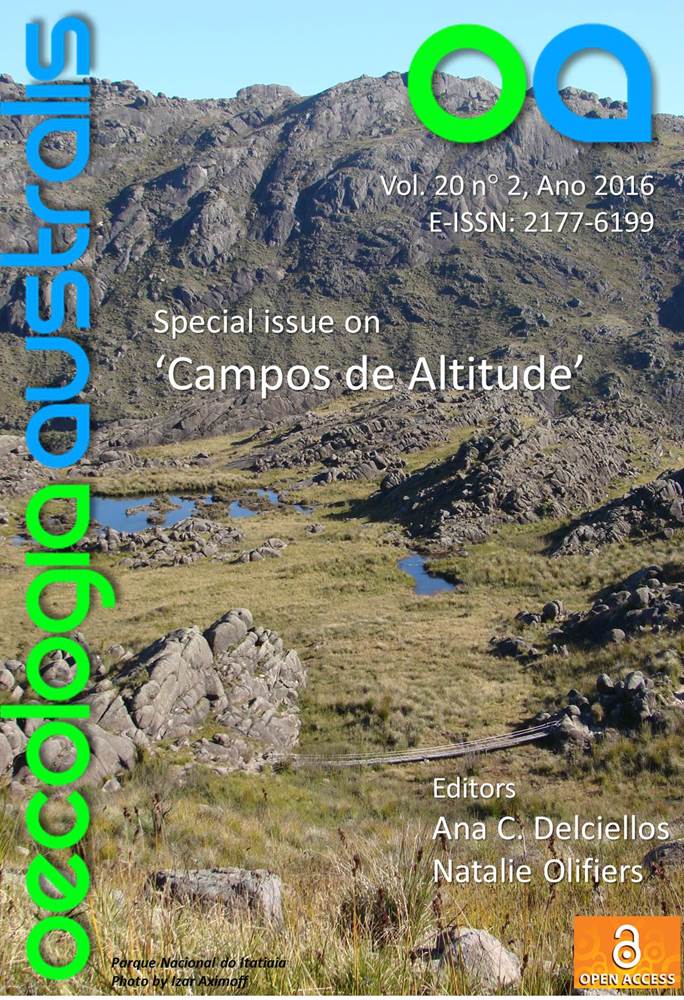HIGHLAND GRASSLANDS AT THE SOUTHERN TIP OF THE ATLANTIC FOREST BIOME: MANAGEMENT OPTIONS AND CONSERVATION CHALLENGES
DOI:
https://doi.org/10.4257/oeco.2016.2002.04Palavras-chave:
Campos Sulinos, Grazing, vegetation dynamics, restoration, Rio Grande do SulResumo
The natural vegetation in the highlands of the southernmost state of Brazil, Rio Grande do Sul, is characterized by extensive grasslands in mosaics with Araucaria forests, usually under cattle grazing. Plant species diversity and endemism in these grasslands is high, though poorly recognized in conservation policy and the general public, and conversion rates into other land uses are high. In this paper, we give an overview of principal biological features of grassland vegetation in the South Brazilian highland region (plant species richness and diversity) and initiate a debate on conservation possibilities and challenges. We use data from four sites of the Long-Term Ecological Research program (LTER/PELD) Campos Sulinos situated in the highland region of the state, where we explore the effects of different types of grassland management (grazing and grazing exclusion) on vegetation structure and composition. Our data give insight into high species richness on both the plot and site scale. Overall, the results indicate the importance of adequate management for the maintenance of grassland vegetation and its characteristic biological features. In theory, grazing or fire can be employed in grassland management, but specific effects of these two types of management need to be considered, as each type of management has distinct effects. We discuss the question of active nature management in conservation units and highlight the importance of research on restoration of degraded grassland areas. Even though grasslands make up the smaller portion of the South Brazilian Atlantic Forest region, their ecological uniqueness calls for specific conservation policy.Downloads
Não há dados estatísticos.
Downloads
Arquivos adicionais
Publicado
2017-02-23
Edição
Seção
Artigo de Revisão


